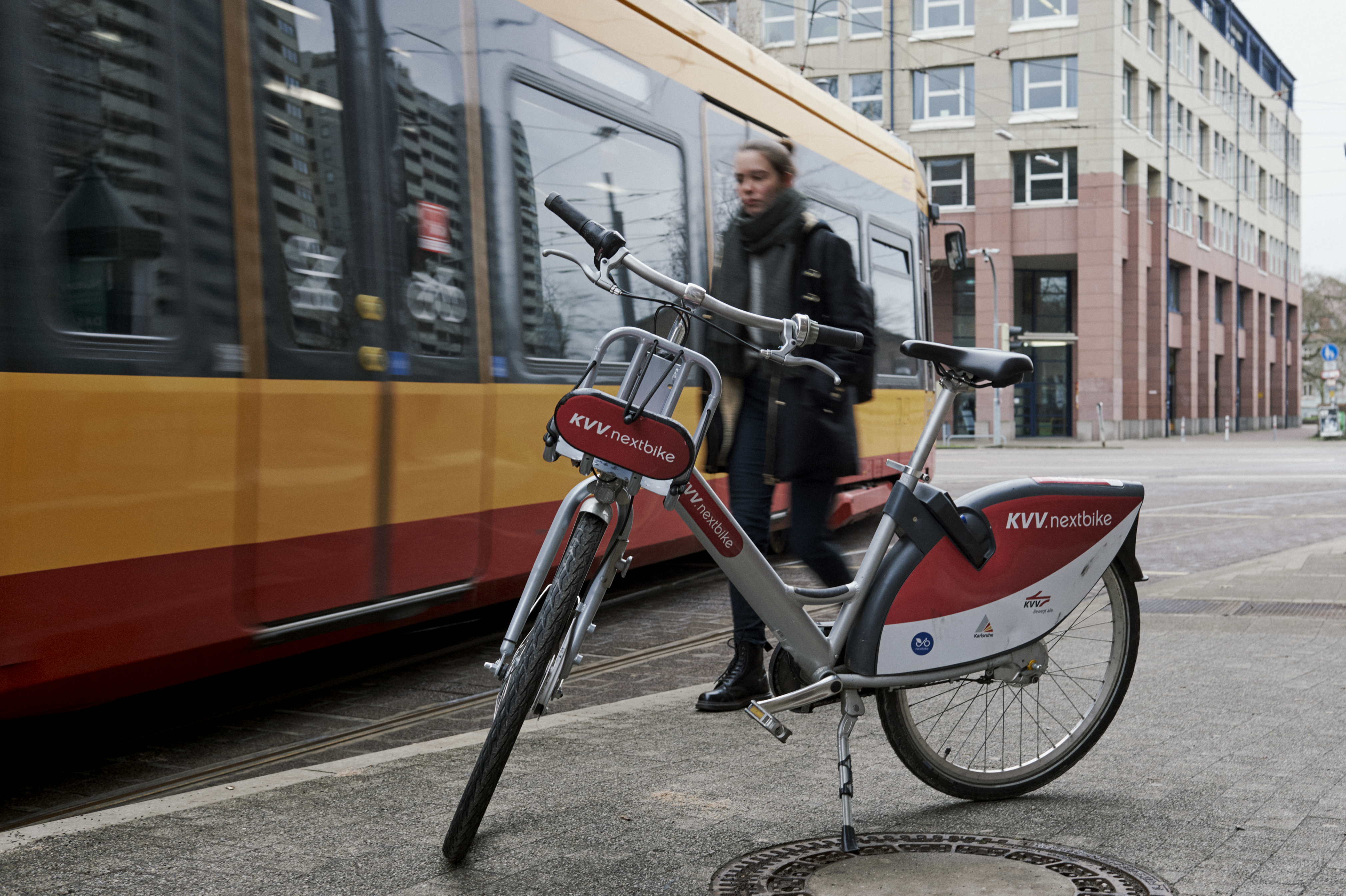Being mobile individually, at any time – without owning a car. To facilitate this, public transportation authorities cooperate with service providers for new forms of mobility such as bicycle sharing, car sharing, or ridepooling. Researchers of Karlsruhe Institute of Technology (KIT) studied how publicly available mobility options in the Karlsruhe region in the future can optimally fulfill the citizens’ needs. The result: Widespread availability of pooling and sharing services and improved public transportation will profit both – and reduce car traffic.
“In times of climate change, high fuel prices, and the aim to be independent from foreign energy imports, every saved kilometer of car traffic helps. The combination of public transportation with other forms of mobility promises additional savings potential,” Dr. Martin Kagerbauer of the KIT Institute for Transport Studies (IfV) states. With its “regiomove” project, the Karlsruhe Transport Authority (KVV) created a network of different mobility options that can be accessed digitally using an app or at mobility hubs – these are stations where users can easily change between different means of transportation.
Widespread Availability of Sharing and Pooling Options
The researchers simulated different future scenarios for the entire mobility supply in travel demand models to find out how this new mobility supply works best: “Sharing and pooling options can help increase public transportation use – but only if they are widespread and available throughout the region,” Kagerbauer says. “Currently, only up to ten percent of the population have access to such options, depending on which area they live in,” Tim Wörle of IfV adds. Increasing this percentage by 20 percent by spreading different sharing services to more rural areas could almost triple their share of trips. “The new options might still be of low significance in the overall trips. However, they can present many additional mobility options to the population beyond personal owned cars,” Kagerbauer explains.
No Competition to Public Transportation
The researchers’ scenarios also prove that the new mobility options represent almost no competition to public transportation or more environmentally friendly means of transportation like bicycles. On the contrary: “Public transportation, currently representing around twelve percent of the overall trips in the Karlsruhe region, would profit from a redoubling of sharing and pooling options with a slight increase, and the same goes for bicycle usage, “ Wörle says. “Additionally, shortening travel times of busses and trains in public transportation by ten percent could increase public transportation usage by six percent.” As a result, the percentage of cars trips would decrease in Karlsruhe and the surrounding areas.
Results Presented at the IT-TRANS Conference
The researchers presented their results at the “regiomove” panel on Thursday, May 12, 2022 from 9:30 am to 1:30 pm at the IT-TRANS conference. During the conference, there was the opportunity to talk to the researchers at their stand at Aktionshalle / Stand EH2, Events Hall / EH2, Messe Karlsruhe, Rheinstetten.
Read more: www.regiomove.de
Being “The Research University in the Helmholtz Association”, KIT creates and imparts knowledge for the society and the environment. It is the objective to make significant contributions to the global challenges in the fields of energy, mobility, and information. For this, about 9,800 employees cooperate in a broad range of disciplines in natural sciences, engineering sciences, economics, and the humanities and social sciences. KIT prepares its 22,300 students for responsible tasks in society, industry, and science by offering research-based study programs. Innovation efforts at KIT build a bridge between important scientific findings and their application for the benefit of society, economic prosperity, and the preservation of our natural basis of life. KIT is one of the German universities of excellence.
